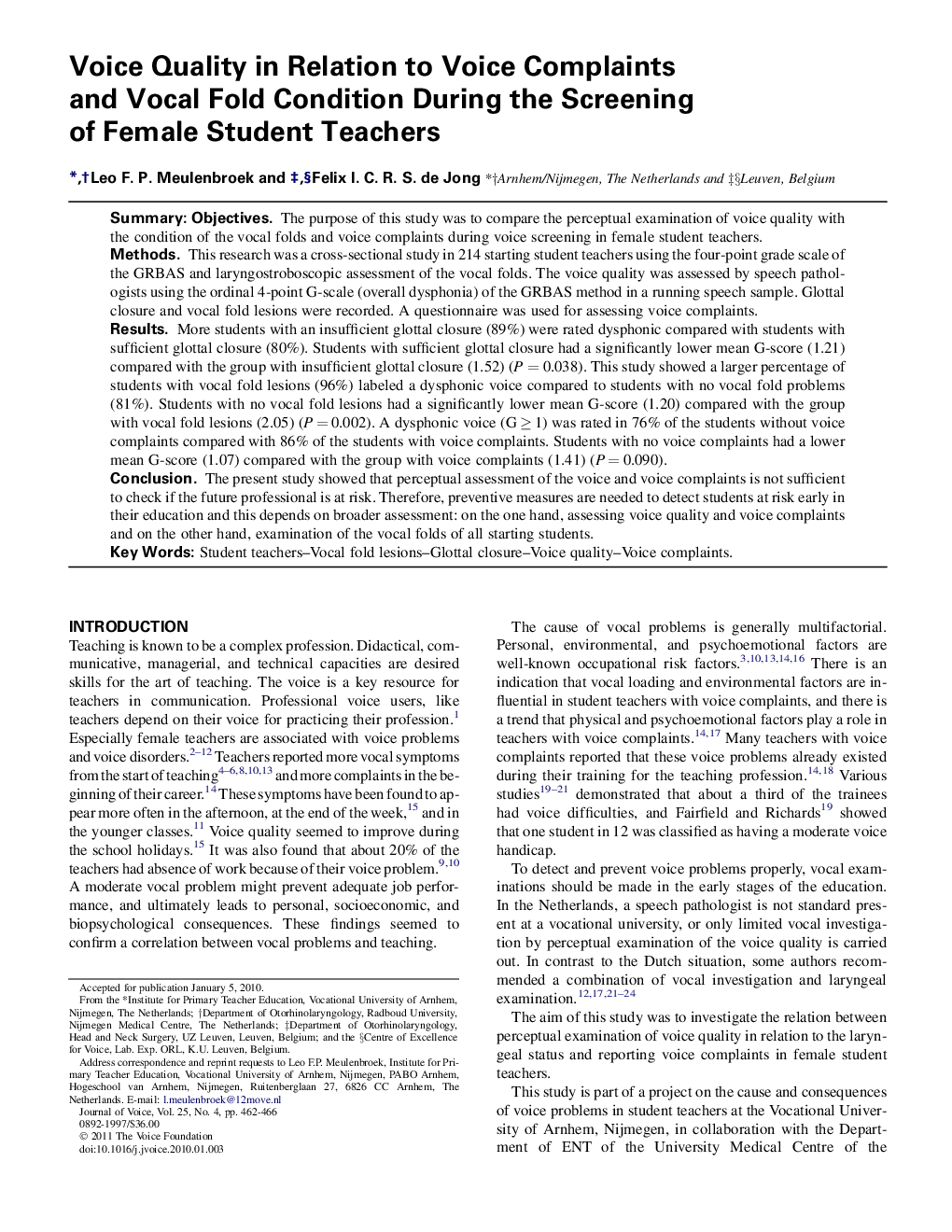| Article ID | Journal | Published Year | Pages | File Type |
|---|---|---|---|---|
| 1102497 | Journal of Voice | 2011 | 5 Pages |
SummaryObjectivesThe purpose of this study was to compare the perceptual examination of voice quality with the condition of the vocal folds and voice complaints during voice screening in female student teachers.MethodsThis research was a cross-sectional study in 214 starting student teachers using the four-point grade scale of the GRBAS and laryngostroboscopic assessment of the vocal folds. The voice quality was assessed by speech pathologists using the ordinal 4-point G-scale (overall dysphonia) of the GRBAS method in a running speech sample. Glottal closure and vocal fold lesions were recorded. A questionnaire was used for assessing voice complaints.ResultsMore students with an insufficient glottal closure (89%) were rated dysphonic compared with students with sufficient glottal closure (80%). Students with sufficient glottal closure had a significantly lower mean G-score (1.21) compared with the group with insufficient glottal closure (1.52) (P = 0.038). This study showed a larger percentage of students with vocal fold lesions (96%) labeled a dysphonic voice compared to students with no vocal fold problems (81%). Students with no vocal fold lesions had a significantly lower mean G-score (1.20) compared with the group with vocal fold lesions (2.05) (P = 0.002). A dysphonic voice (G ≥ 1) was rated in 76% of the students without voice complaints compared with 86% of the students with voice complaints. Students with no voice complaints had a lower mean G-score (1.07) compared with the group with voice complaints (1.41) (P = 0.090).ConclusionThe present study showed that perceptual assessment of the voice and voice complaints is not sufficient to check if the future professional is at risk. Therefore, preventive measures are needed to detect students at risk early in their education and this depends on broader assessment: on the one hand, assessing voice quality and voice complaints and on the other hand, examination of the vocal folds of all starting students.
